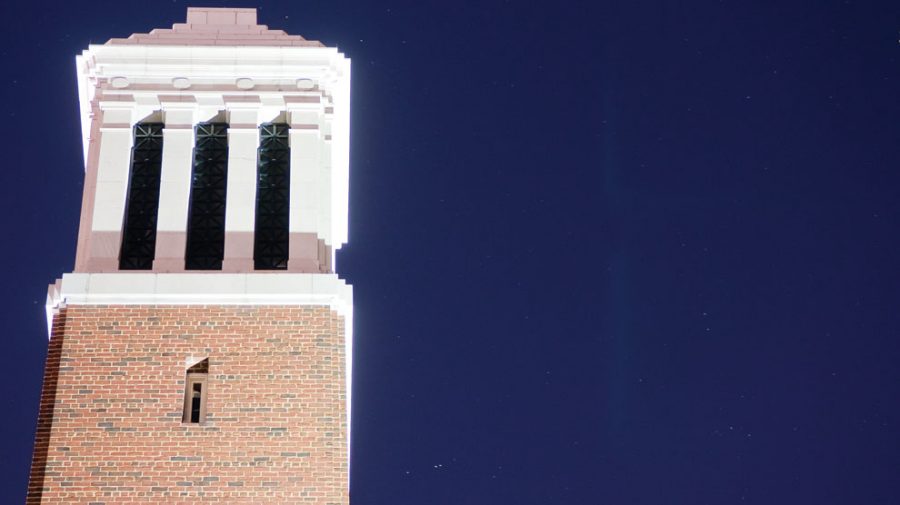Walking across the University’s Quad and not noticing Denny Chimes is like visiting Paris and not glancing at the Eiffel Tower, or strolling the streets of London and not checking the time with Big Ben. While the chimes may not be as grandly imposing as those European infrastructures, the 81-year-old tower proudly stands as a focal point of campus and a symbol of the University’s heritage.
Former UA President George Hutcheson Denny was a visionary and one of the most important presidents the University has ever had, said Mike Largin, director of infrastructure support for financial affairs and the current consultant for Denny Chimes.
“The reason the students wanted the chimes built is because they really loved Dr. Denny and heard rumors that he was thinking of retiring,” Largin said. “It’s sitting directly across from the President’s Mansion so that he could see it every day.”
Students raised 7.5 percent of the money for the construction of Denny Chimes and existing funds supplied the rest of the money it took to complete the nearly $40,000 original chimes.
The basic engineering mechanisms have changed over the years with the innovations of modern technology. The details of the changes in the chimes can be found within the pages of “The University of Alabama: A Guide to the Campus,” by Robert Oliver Mellown.
In 1929, Mellown wrote, the genuine campanile carillon was erected with 27 two-octave tubular bells, an automatic player for musical programs and a manual keyboard for the carilloneur to play.
James F. Doster, a 98-year-old former UA history professor whose father is the namesake of Doster Hall, recalls the chimes being built on campus.
“Previously, classes were announced by a whistle,” he said. “The construction of Denny Chimes was just something happening on campus. I don’t remember there being any particular excitement around it.”
When the chimes were completed, Doster said he climbed the ladder with a friend who was the chimes’ keeper.
“The mechanism was very complicated,” he said. “It was controlled on the bottom and the hollow cylinders at the top made a very nice musical sound.”
The bells, keyboard and player were replaced with an electronic system in 1945 due to disrepair during World War II.
In 1966, the electronic system was replaced with 305 small bells that were installed on the ground floor and electronically amplified through loud speakers on the belfry.
Denny Chimes were silent for a period of time in the 80s due to exhaustion from years of constant functioning. Largin said a digital system was installed in 2008 and remains in place today.
“We’ve had a lot of lightning strikes over the years, and we are hoping the new system will make it better and more reliable,” Largin said.
The system is fully automatic, he said. However, the University still has a carilloneur, Heekyung Lee, to play for holidays, game days and special events. Largin selects music for Lee to play, and he said for students to expect a full week of patriotic anthems for upcoming Veteran’s Day.
While students are no longer allowed to climb up into the chimes as Doster did almost 80 years ago, one can stand at the bottom and meditate on Denny’s legacy.
“I’ve spent most of my life in Tuscaloosa, and I have known every president that this institution has had since 1900,” Doster said. “I knew Denny very well, and he managed to build the University up. His main problem was that he had little money.”
Denny served as president of the University for almost a quarter of the century that encompassed the Great Depression.
Suzanne Rau Wolfe in her book, “The University of Alabama, A Pictorial History” credits Denny as possessing “financial wizardry” with the ability to make $1 do the work of $5.
Denny forestalled the attempt to raise tuition or entrance requirements and managed to increase the number of buildings and students on campus during his tenure. He also put an emphasis on football and is credited for being part of the reason the sport became successful at Alabama.
Every hour, Denny’s legacy resonates with a striking of the chimes. Its graceful peals now send a new generation of students scurrying to class.
“I like the way it dings and reminds me of what time it is when I’m walking to class,” Michelle Meadows, a junior majoring in nursing, said. “If it dings on the hour, then I know it’s time to start running.”









